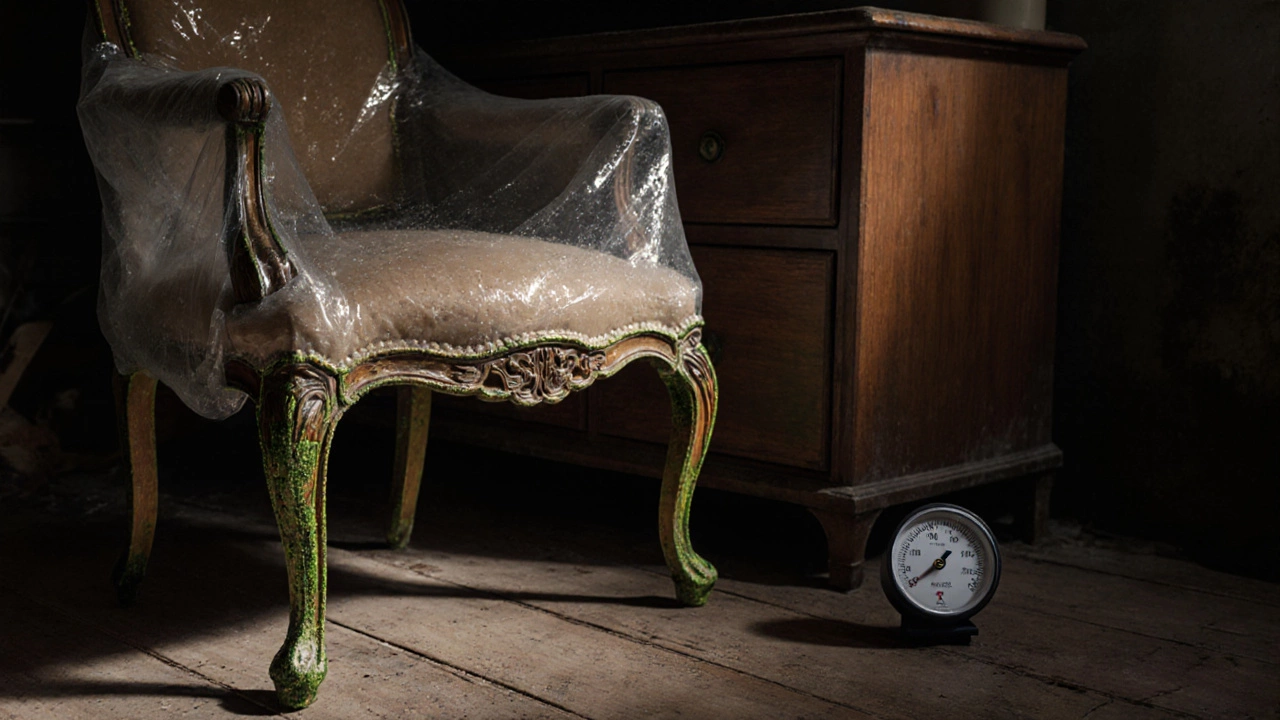When you own handcrafted wooden furniture, protecting furniture from mold, the process of preventing harmful fungi growth on wood surfaces due to excess moisture. Also known as furniture damp protection, it’s not just about cleaning—it’s about stopping the problem before it starts. Mold doesn’t just look bad. It eats away at wood fibers, weakens joints, and leaves stains that won’t scrub off. In the UK’s damp climate, this isn’t rare—it’s expected if you don’t take simple steps.
Most people think mold only shows up in basements or attics, but it thrives anywhere humidity stays above 60% for long periods. Your oak dining table, walnut bookshelf, or pine bed frame can all be targets. The real danger isn’t the mold spores themselves—it’s what happens when moisture gets trapped under rugs, against walls, or inside poorly ventilated storage spaces. humidity control for furniture, managing indoor moisture levels to prevent wood damage and fungal growth is the first line of defense. That means using dehumidifiers in rooms with high moisture, keeping furniture a few inches from walls, and never placing it directly on concrete floors.
Another big culprit? Storage. If you’ve ever stored a dresser in a garage or spare room over winter, you know how quickly things go wrong. damp furniture protection, methods like using breathable covers, silica gel packs, and proper airflow to prevent moisture damage during storage isn’t optional—it’s essential. Never wrap wood in plastic. It traps moisture like a sauna. Instead, use cotton sheets or specialized furniture covers that let air move. Keep storage areas dry, cool, and well-ventilated. A small fan running overnight can make a bigger difference than you’d think.
And don’t ignore the little things. Wipe up spills immediately. Use coasters. Keep plants away from wooden surfaces. Even steam from a kettle or shower can raise humidity enough to start trouble. If you live near the coast or in a terraced house with poor insulation, you’re at higher risk. That’s why regular checks matter. Run your hand along the back of a cabinet or under a side table. If it feels cool or clammy, that’s your warning sign.
Wood isn’t just furniture—it’s something you live with every day. It holds memories, shapes your space, and lasts generations if treated right. You don’t need expensive products or complicated systems. Just consistent care. Know your home’s humidity. Keep air moving. Store smart. Clean gently. These aren’t fancy tips—they’re the basics that keep your pieces from turning into a moldy mess.
Below, you’ll find real advice from people who’ve been there—how to fix damp damage, what materials to avoid in storage, and how to spot early signs before mold takes over. No fluff. No guesswork. Just what works in UK homes.

Learn how to protect furniture from mold in storage with simple, proven steps that work in damp climates. Avoid costly damage with humidity control, proper cleaning, and smart storage practices.
More